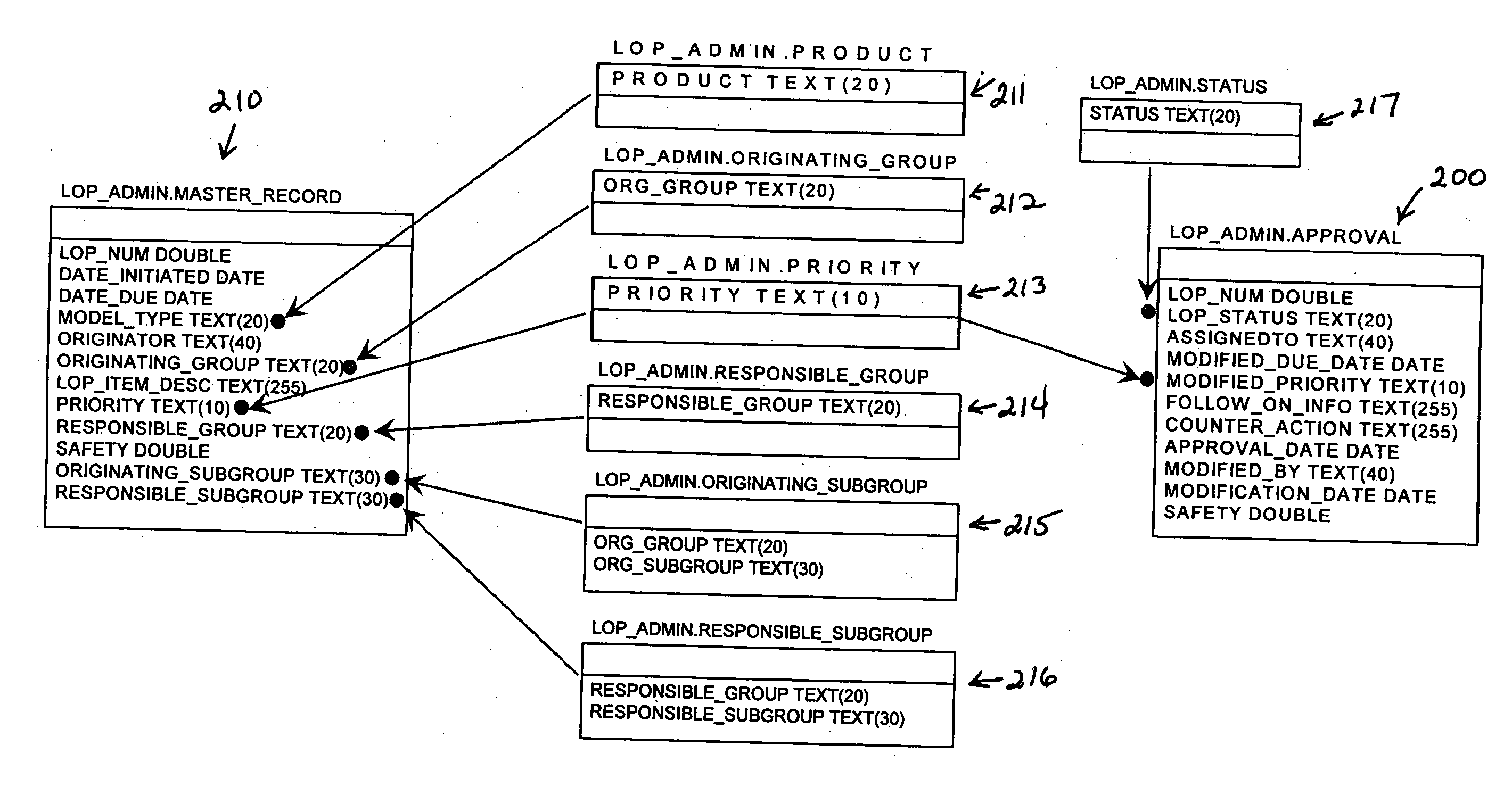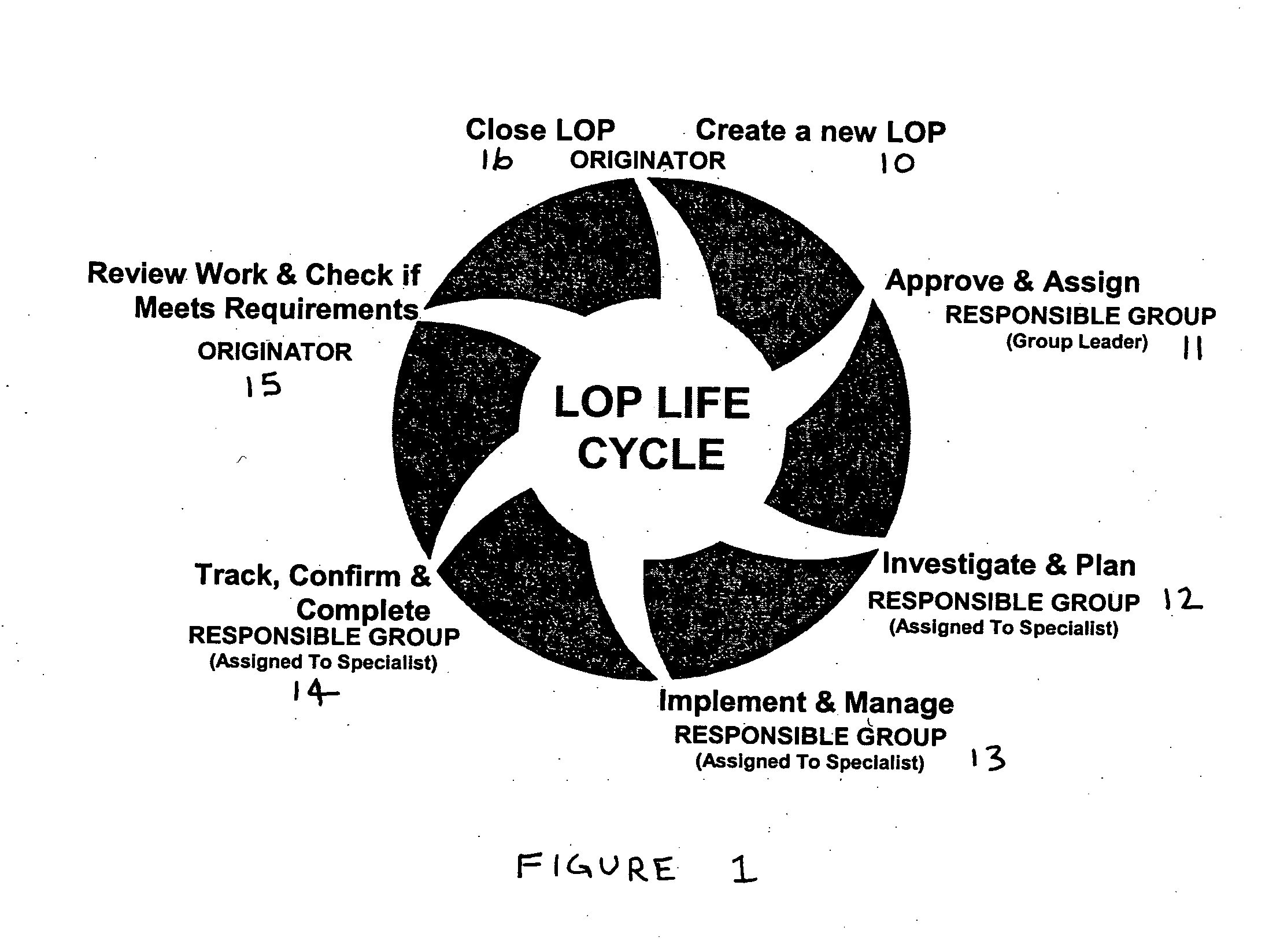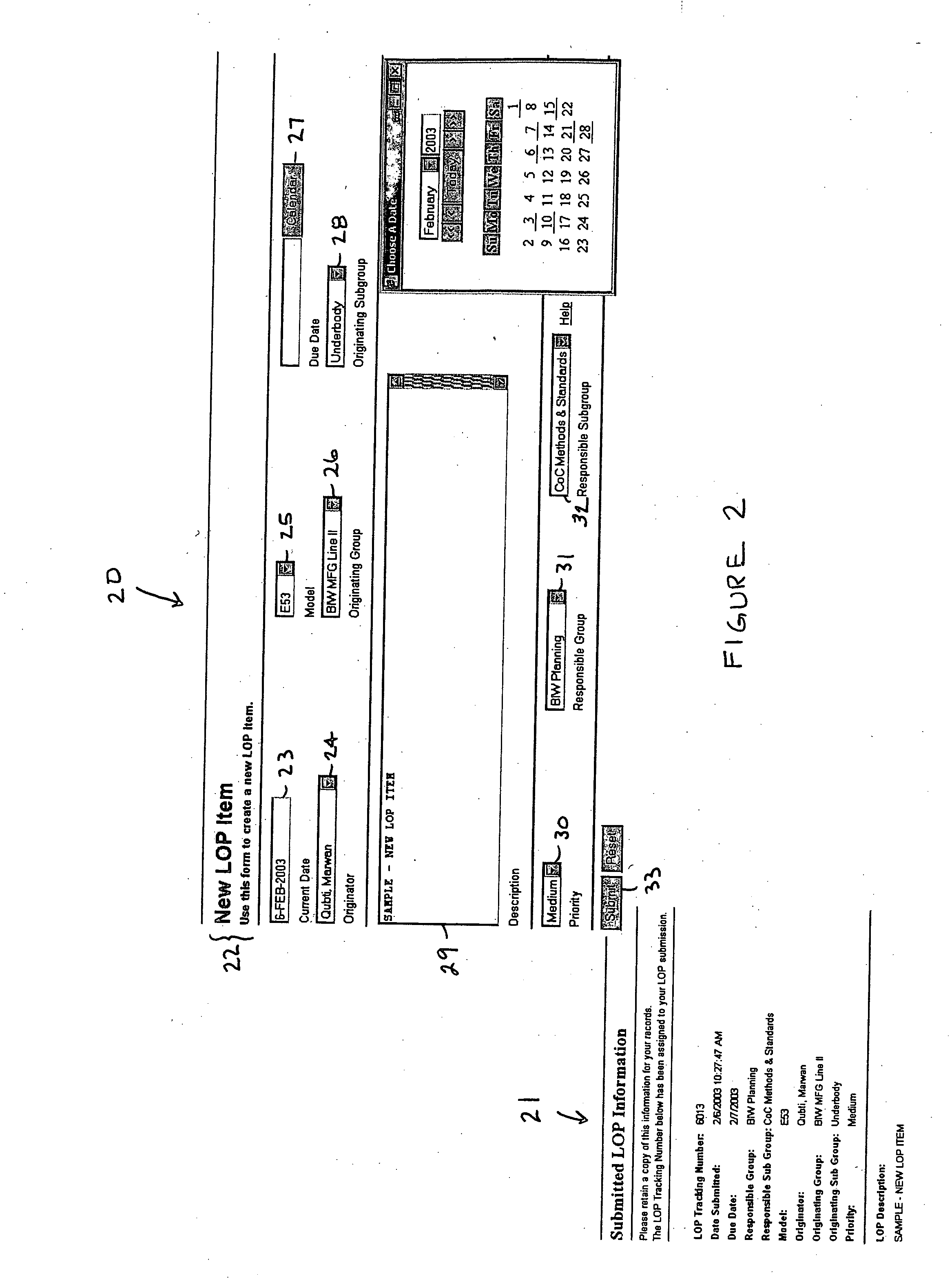Business workflow database and user system
a business workflow and database technology, applied in the field of business workflow systems, can solve the problems of complex monitoring of task progression and completion within the corporate environment, difficult to keep tabs on tasks and their status, and suspect reporting information regarding the efficiency or effectiveness of workers, etc., to achieve complete accountability of progress and effectiveness, and simple and easy-to-use interfaces
- Summary
- Abstract
- Description
- Claims
- Application Information
AI Technical Summary
Benefits of technology
Problems solved by technology
Method used
Image
Examples
Embodiment Construction
[0025] In a sizeable business environment, the task of maintaining, tracking, and documenting the progress of tasks to be performed is complex. Especially in, for example, the manufacturing environment, the identification of new tasks, the assignment, execution, supervision, analysis, completion, and confirmation of those tasks requires substantial personnel resources—just for administrative upkeep. FIGS. 1-12 illustrate several embodiments of so-called LOP (List of open points) systems that more adequately control, track, and report on those open task complexities.
[0026] The life cycle of an LOP item starts with the originator when a new open point is created. It then proceeds through a series of actions that will eventually result in a closure status for the item. The system of FIG. 1 is simple to use and requires virtually no special training for the originators of tasks or for those responsible for completing them. In every instance, the item returns to the originator at its co...
PUM
 Login to View More
Login to View More Abstract
Description
Claims
Application Information
 Login to View More
Login to View More - R&D
- Intellectual Property
- Life Sciences
- Materials
- Tech Scout
- Unparalleled Data Quality
- Higher Quality Content
- 60% Fewer Hallucinations
Browse by: Latest US Patents, China's latest patents, Technical Efficacy Thesaurus, Application Domain, Technology Topic, Popular Technical Reports.
© 2025 PatSnap. All rights reserved.Legal|Privacy policy|Modern Slavery Act Transparency Statement|Sitemap|About US| Contact US: help@patsnap.com



